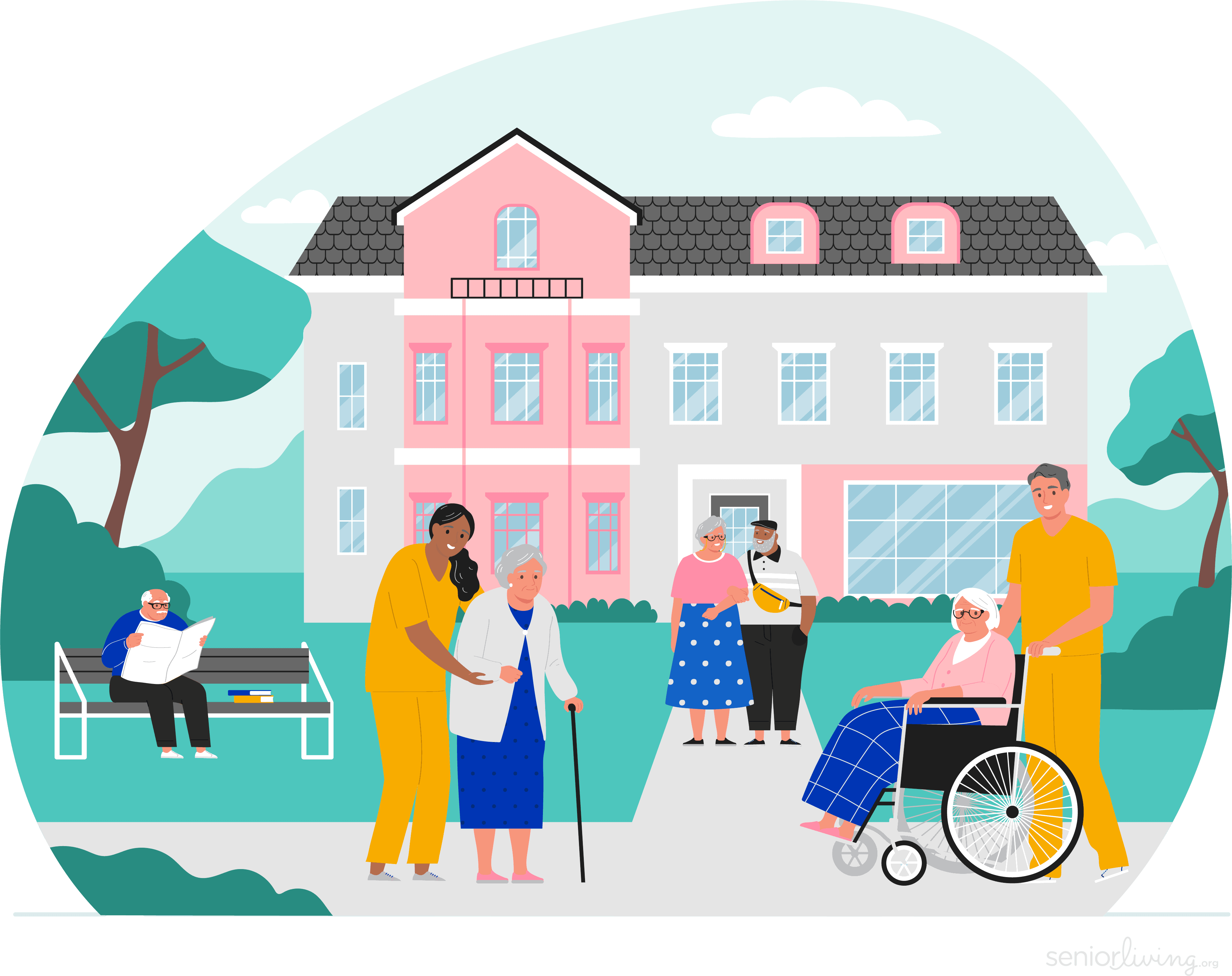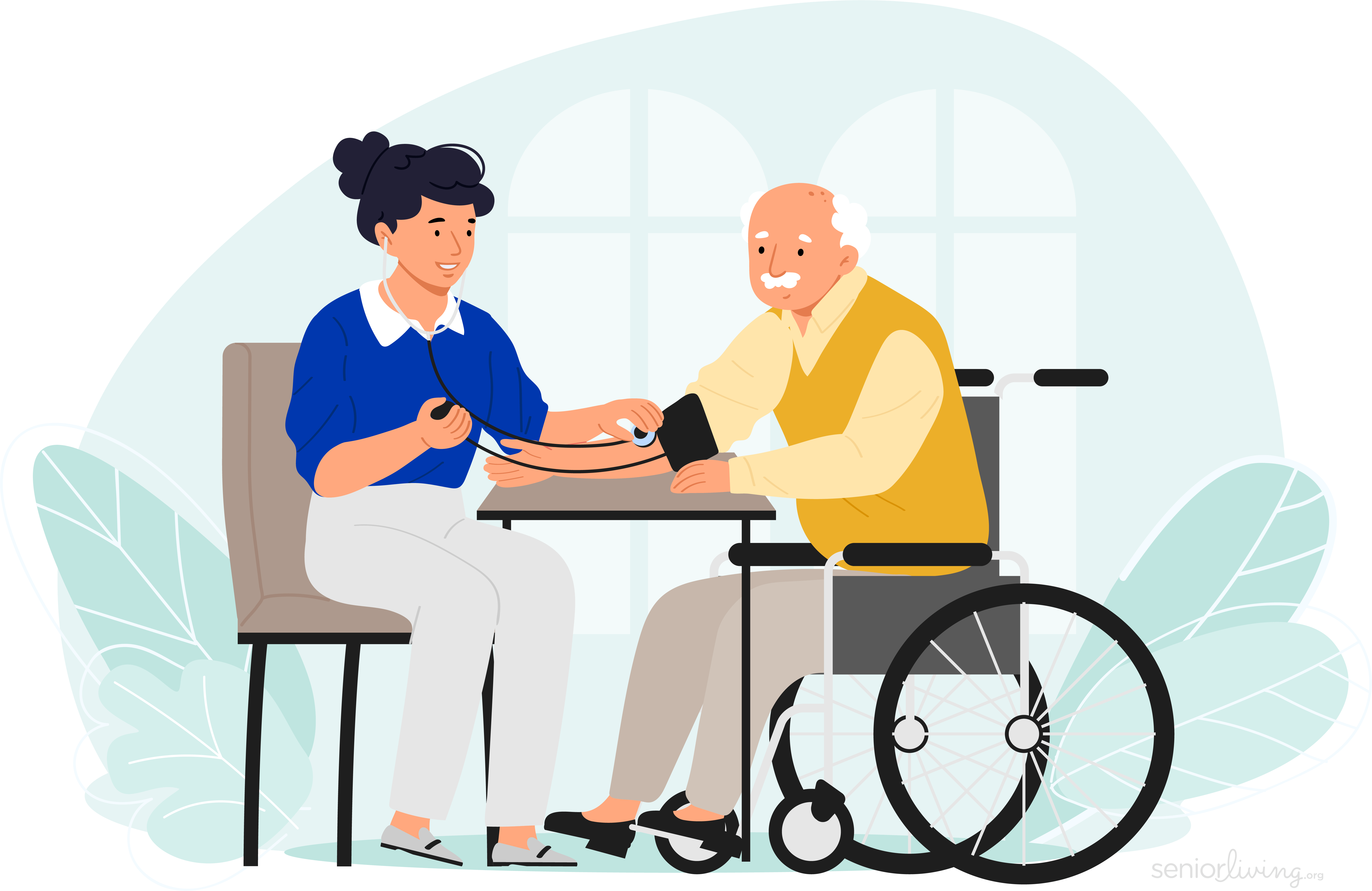Assisted Living Age Requirements
Minimum assisted living age requirements vary by state and facility, but typically range between 62 and 65 years old.
SeniorLiving.org is supported by commissions from providers listed on our site. Read our Editorial Guidelines
Find Senior Living Near You
Join 1,019,247 Seniors Who've Searched for Housing Communities on SeniorLiving.org.
Find Senior Living Near You
Older adults in assisted living can be a diverse group, from different areas of the country and with different education and work histories, interests, and social lives. Seniors in these communities tend to be much less diverse when it comes to age, however. If you’re wondering if you or a loved one may be too young to consider assisted living, here’s what you need to know about age requirements and how they could affect your experience in an assisted living community.
Table of Contents
What Is the Youngest Age for Assisted Living?
Assisted living communities typically have minimum age requirements — usually between 62 and 65 years old — but there’s no hard-and-fast nationwide rule for age minimums.
Here’s why: Few states have specific regulations that require assisted living (or adult care homes, personal care homes, or whatever terms states choose to use) communities to set a minimum age requirement for residents. They do, however, have requirements for housing designated for seniors to make sure they adhere to federal fair housing requirements.
>> Further Reading: Senior Housing Options and Retirement Guide
The U.S. Department of Housing and Urban Development (HUD) Fair Housing Act prohibits housing discrimination based on race, color, national origin, religion, sex, disability, or familial status (which means you can’t discriminate against people with young children). But there’s an exemption, the Housing for Older Persons Act of 1995, for senior housing. To qualify, communities need to adhere to each of the following guidelines that exempt housing meant for seniors:
- In communities designated as 55+ (often referred to as independent living), at least 80 percent of the units must have at least one occupant who is 55 or older.
- The facility or community must publish and adhere to policies and procedures that demonstrate the intent to operate as 55-or-older housing.
- The facility or community must comply with HUD’s regulatory requirements for age verification of residents.1
In other words, minimum age requirements in assisted living communities simply protect the facilities from violating the Fair Housing Act. Some states specify minimum ages for senior housing residents, while others don’t. In California, for example, someone 55 living in a senior living community can be considered a senior citizen. Connecticut also specifies that assisted living communities can serve residents 55 and older, and Texas has similar language on the books.
States tend to place more emphasis on care needs in determining eligibility. For example, a state may specify that residents of assisted living facilities must need help with at least a couple activities of daily living (ADLs), such as bathing or dressing. To make sure assisted living facilities don’t accept residents whose care needs exceed what facilities are capable of providing, they may specify that seniors who demonstrate greater care needs (meaning they need help with, say, three or more ADLs) should be steered toward memory care or skilled nursing instead, depending on their specific needs.
>> Related Reading: A Guide to Long-Term Care for Seniors
Age Requirements for Government Programs
States also may have minimum age requirements for certain government services, such as care of residents in assisted living. In Georgia, for example, the Aged, Blind, and Disabled Medicaid Program (ABD) provides some care to eligible Georgia residents 65 and older. (Contact the Georgia Department of Family and Children Services to learn about eligibility and benefits.) Georgians 60 and older may qualify for Home- and Community-Based Services, which does not pay for assisted living room and board but can help pay for services such as meal delivery, home repair, and personal care.

For some perspective about how much states can differ in this area, here’s a sampling of how typical it is to use Medicaid funds to help pay for care in assisted living care in different parts of the U.S.
- New Hampshire: 15 percent of assisted living residents use Medicaid benefits to help pay for assisted living care
- New Mexico: 14 percent
- Kentucky: 7 percent
- North Dakota: 30 percent
- California: 2 percent
- Massachusetts: 12 percent
- Oregon: 47 percent
- Rhode Island: 23 percent2
>> Learn About: Do Medicare and Medicaid Cover Assisted Living?
Average Age for Assisted Living
Although many older adults would be welcomed in assisted living at younger ages, most wait to make the move until they’re older than their early 60s, the minimum age requirement of many communities. Reasons for waiting can vary, but often people don’t make the move to assisted living until they find they’re not able to take care of themselves in their own homes anymore due to illness, an accident, or age-related difficulties.
The cost of assisted living can also be a deterrent. Assisted living can be expensive, causing many families to put off such a move until they’re old enough to receive Social Security benefits (typically at age 65, but you can receive a lower monthly amount at 62 and a higher amount if you wait until you’re 67).3
>> Learn More: How to Find Affordable and Low-Income Senior Housing
Many senior living communities accept people as young as 55, but assisted living residents are typically considerably older. Nationwide, half of assisted living residents are over 85 years old. Another 31 percent are between 75 and 84, and less than 6 percent are under 65. That means 80 percent of assisted living residents are at least 75 years old.4
>> Learn About: Senior Living Statistics
The average age of around 85 for assisted living residents has been consistent over the past several decades. Recent research found that the average age of people in assisted living is 84 years old, and those residents need assistance with two to three ADLs.5 Other research notes that almost half of assisted living residents are experiencing some cognitive issues.6
Benefits of Minimum Age Requirements in Assisted Living
Living in a vibrant community filled with people of similar ages can be beneficial for older adults. Residents of a similar age may share experiences, such as serving in the military or growing up in the same state at the same time, which can enhance camaraderie.
>> Further Reading: What Is Senior Cohousing?

In addition, living among other residents who need assistance with similar issues, such as getting around or managing medications, can be comforting for seniors who may not like needing assistance and feel better when those needs are the norm in their surroundings.
What Are the Eligibility Requirements for Assisted Living?
Each state has its own specific requirements for determining eligibility for assisted living. States also have their own established terms for assisted living facilities. In some places, they’re referred to as “personal care homes” or “residential care homes” rather than “assisted living.”
Eligibility tends to have a lot to do with how much assistance a person needs with activities of day-to-day living, such as bathing, dressing, cooking meals, moving about your home, and taking care of household chores. States also typically have extensive guidelines in place for staffing, training, contracts, billing, emergency procedures, accessibility throughout communities, and much more.
>> Further Reading: What Are Activities of Daily Living (ADLs)?
Beyond state requirements, individual communities will do careful assessments of potential residents to make sure assisted living would be safe and appropriate for them. If not, they may suggest independent living options if little assistance with ADLs is needed, or memory care or skilled nursing if care needs are more significant.
Those assessments are typically performed by nurses and community administrators, and they include tests for cognitive ability, mobility challenges, and medical exams. Nurses will also ask detailed questions about whether residents need assistance with ADLs. Communities will consider those assessments to create a care plan for you or your loved one, if the particular facility is appropriate for them.
The recommendations can be pretty individualized, since facilities differ so much in terms of the care they’re able to provide. Some residents may be better suited for a community that offers diabetes management or physical therapy on site, for example, while others may not need those sorts of health-related services.
>> Learn More: Federal and State Nursing Home and Assisted Living Regulations
Assisted living communities can vary a bit in the level of care they can provide, and that affects eligibility. Someone who already needs assistance with three or more activities of daily living may not be a good fit for a community that provides independent living and assisted living only. In such a case, a community may recommend a different community where, for example, you or your loved one can transition seamlessly into memory care if care needs increase. Community administrators will do their best to determine how much help you or your loved one needs and whether their particular community will be a safe and comfortable option.
US Department of Housing and Urban Development. (2024). The Fair Housing Act: Housing for Older Persons.
American Health Care Association/National Center for Assisted Living. (2024). Communities.
US Social Security Administration. (2024). Starting Your Retirement Benefits Early.
American Health Care Association/National Center for Assisted Living. (2024). Communities.
JAMA Network. (2023). The Natural History of Disability and Caregiving Before and After Long-Term Care Entry.
AARP. (2004). Assisted Living in the United States.
